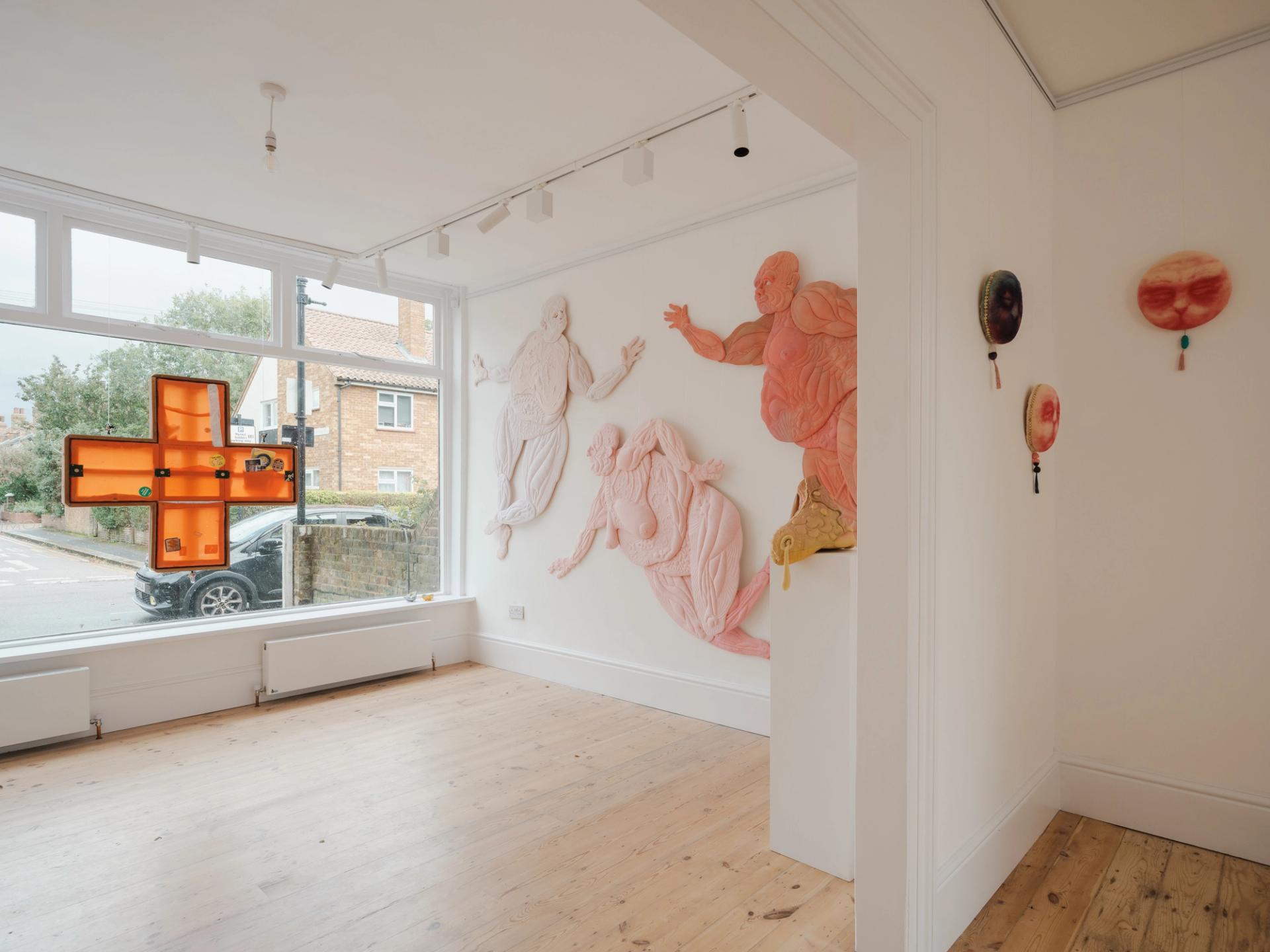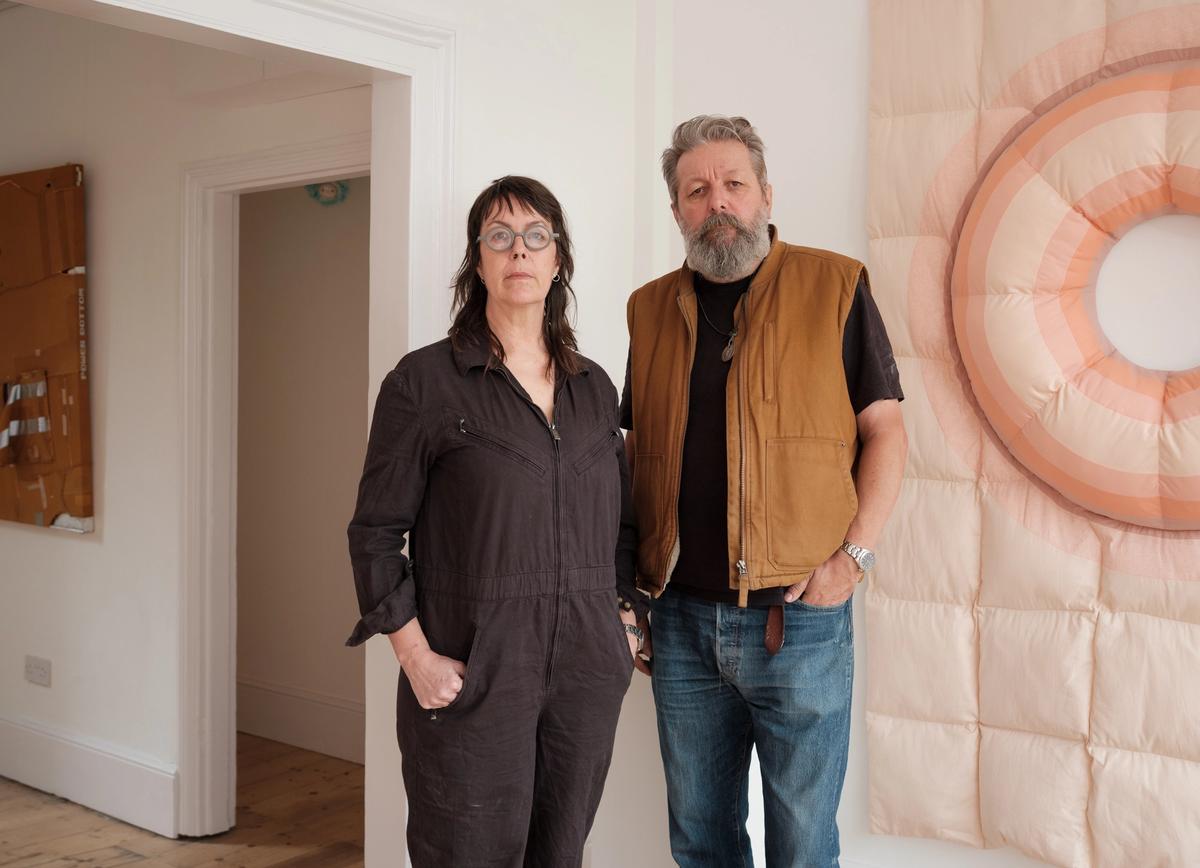A lot of attention is placed on London’s centrally located, bluechip galleries in October, with major announcements and openings often lined up to align with the blockbuster Frieze art fairs. Yet a new gallery opening in the north-east district of Walthamstow this week exemplifies the interesting work being done off the city’s beaten track.
Panrucker, which opens on 3 October in the picturesque Walthamstow Village, has been founded by the artist and filmmaker Kate Williams and her husband Tim Crocker, a photographer. The pair, neither of whom have previous experience in galleries, have placed emphasis on creating a flexible, sustainable business, while also giving emerging artists a platform that might otherwise be “difficult” to find.
A central aspect of the gallery’s model is that it can pop up and disappear as needed. Williams and Crocker have purchased the space—made possible by funds left over from the sale of Williams’s parents’ house—but will not be using it as a full-time art business. Instead, the site will be used to host Panrucker exhibitions three or four times a year, and the rest of the time, be available as a “flexible event space”, Williams says.
This approach will not only allow the gallery to survive, but also enable Williams to “sell the work of people whose work I love, but on reasonable terms”, she says. The terms are indeed generous, at least relative to many bluechip galleries. The gallery asks for a commission of only 30%—compared with the traditional 50%—and there are no consignment agreements, meaning “artists won't lose a percentage of a sale that comes in via their Instagram five and a half months after the show's over", Williams continues.

An installation view of Something Quickening, which references the sense of something moving in one’s body, with works including Eva Dixon’s Sod Off! (2024, in the window) Photo: Tim Crocker
A less “polite” programme
The art on show is likely to gently push against the expected, too. Williams, whose art practice is at present textile-based, says she feels that in a world of blockbuster art fairs held in large white tents and conference centres, there is a sense that art, in turn, is “getting a bit more mono”. With some “very notable exceptions“, she continues, “there's a kind of politeness and a glowy rosiness, critically and aesthetically, that it would be nice to push back against“.
She adds that while there is some “really great painting” out there, she is wary of a world where one genre dominates. With that in mind, she will be looking to present work in a variety of mediums, with the first show, Something Quickening, focusing on sculpture.
Something Quickening brings together works that tie in to the human body and which, according to the press release, put forward something “a bit less polite”. Indeed, there is Williams’s own Softcore 1 (2024), a pink, pillowy fabric wallwork with a hole in the middle resembling the mouth of a sex doll, and Kenji Lim’s Hot Nut (Bristler) (2024), an otherworldly, oyster-like object covered with fur and dripping slime.

An installation view of Something Quickening with Kenji Lim’s Cherub (2024) hanging from the ceiling and his Hot Nut (Bristler) pictured on the table at the back
Photo: Tim Crocker
All of these artists are friends Williams has made over recent years, and her own place as an artist shaped the way the show came together. “The opening conversations I had with them about the possibility of the show were different from the usual I think,” she says. “I don't believe it's possible to maintain a front as an artist—or at least I can't—and that leads to authentic, expansive conversations about each of our practices and concerns, and the challenges of being 'emerging'.”
A much-needed platform
Those challenges are real. A survey by the charity Acme last year revealed that one in three artists in the UK felt they would likely need to change careers within five years, while studio space is notoriously expensive and hard to come by.
No one gallery can solve these problems, but opening spaces that operate outside of the traditional, and often rarified central London districts could signal a positive step towards a more balanced ecosystem for artists to work within. Several galleries have been opening in London’s outer zones in recent years, from Oof in Tottenham to Xxijra Hii in Peckham, and these spaces offer an important counterpoint at a time when others are taking a “go or grow” approach, flocking to central London hubs such as Fitzrovia in the face of financial pressures.
Walthamstow, while thin on the ground when it comes to fine art galleries, has strong artistic heritage—it is home to the William Morris Gallery, for example, and is known for its street art, including a recently added mural by Banksy. “I do think there’s something worth trying in a place like this, where there is both a really valuable history of artistic production and recent history of interesting stuff going on,” Williams says.
Nevertheless, she and Crocker are realistic about what is a challenging environment. “Every minute that it’s not being rented out, we’re losing money effectively,” Williams says. “But we thought we have a very short window of opportunity to do something interesting and exciting and challenging and difficult and terrifying.”
It might, she adds, not last forever. “But it's still worth it, isn't it?”


